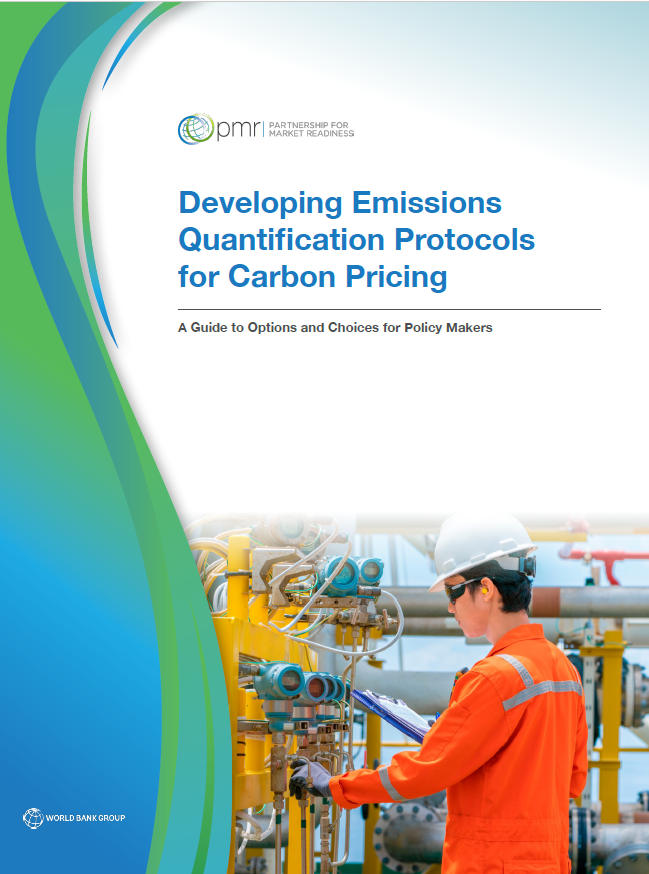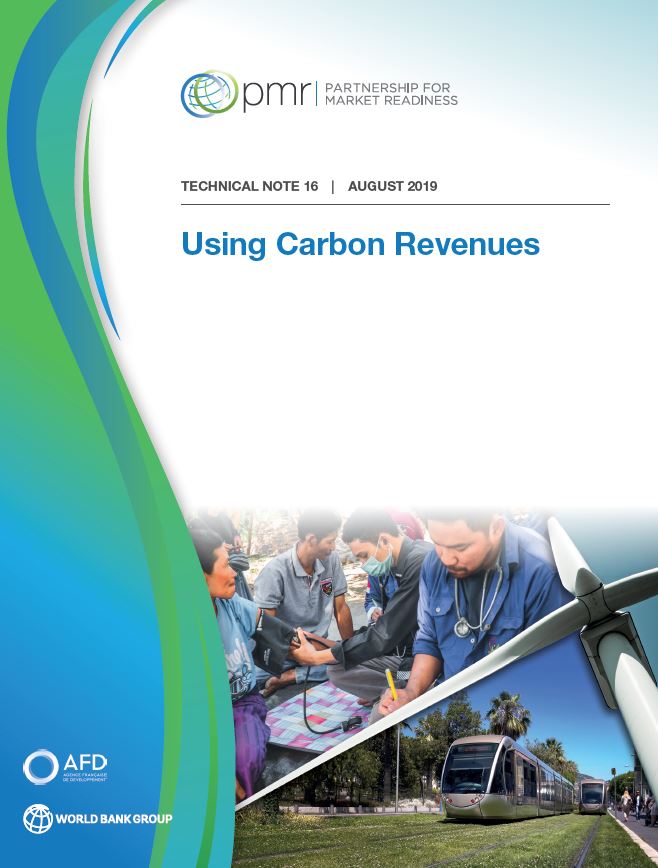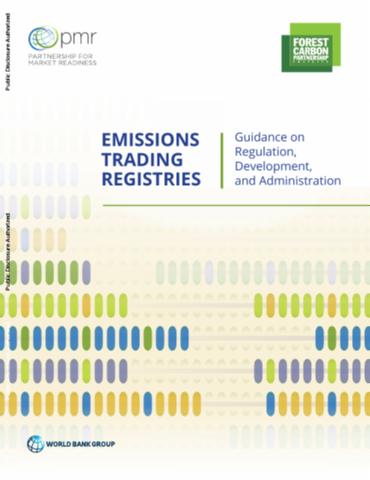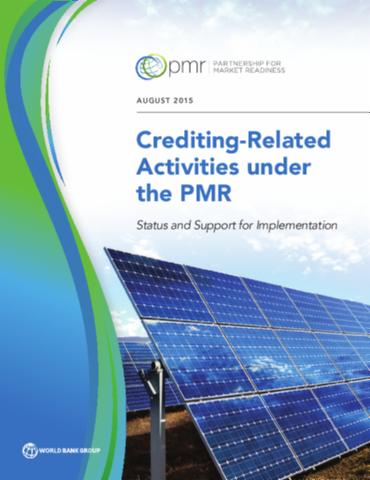Contributing to the literature on carbon pricing for climate change mitigation.
|
|
From the Ground Up: A Decade of Lessons on Carbon Pricing July 2021
The
World Bank’s partnership for market readiness (PMR), through grant support and
technical assistance, supported 23 emerging economies and developing countries in
building their institutional and human capacities to design, institute, and
implement carbon pricing instruments, such as emission trading systems, carbon
taxes, and or carbon crediting mechanisms along with underlying infrastructures such
as monitoring, reporting and verification (MRV) and registry systems. As the PMR
winds down and its successor - the partnership for market implementation (PMI) -
becomes operational in 2021, the time is opportune to take stock of and analyze key
lessons learned from the decade of PMR experience. This report draws lessons from
the PMR’s decade-long country, technical work, and policy analysis work programs and
relates the insights captured through its extensive country participant consultation
process, its online surveys, and feedback from its contributing country partners and
World Bank task teams. The lessons documented in this report are expected to provide
practical insights for other developing countries planning to design and implement
carbon pricing initiatives. In addition, the lessons learned on the PMR process, as
well as the grant implementation process, are likely to help similar initiatives,
including the PMI, to adopt improved program design and governance options that
support efficient funds allocation, deployment, and implementation.
|
|
|
July 2021 A standardized framework is needed to assess countries’ capacity building needs to participate in carbon pricing and international carbon markets. The World Bank initiated the development of the mitigation action assessment protocol (MAAP) in 2015 to drive meaningful assessment of diverse climate actions. Pilots results showed that MAAP provides a transparent and relatively easy-to-use framework to help countries identify strengths and opportunities for improvement. Future implementation of the tool will seek to address identified challenges such as collecting evidence, identifying capacity building priorities, and providing guidance on communication strategies. This report summarizes key findings and lessons learned from pilots. |
|
Soil Organic Carbon (SOC) MRV Sourcebook for Agricultural Landscapes June 2021 Despite the significant potential of soil to sequester organic carbon, there are challenges to implementing carbon sequestration projects. For example, changes in soil carbon can be relatively small in magnitude per unit area and slow to be fully achieved, while its measurement and monitoring can be difficult and costly depending on the focus of the assessment. This sourcebook is designed to provide a conceptual foundation for soil organic carbon measurement and monitoring in croplands and grazing lands or rangelands. It provides methods and simple step-by-step guidance to produce reliable soil carbon measurements across a variety of settings and contexts, with comparisons on what frameworks, approaches, or methods to choose relative to the goal of the assessment, costs, feasibility, and uncertainty. Although greenhouse gas (GHG) emissions (methane, CH4, or nitrous oxide, N2O) associated to agricultural land management can be significant and must be assessed to calculate total net GHG reductions of a project, this sourcebook focuses on soil carbon and specifically changes in soil carbon in agricultural lands that are a direct consequence of land management. |
|
|
The role of a carbon price in tackling road transport emissions May 2021 Road transport represents a significant and growing share of global greenhouse gas emissions. The sector has opportunities for mitigation through activity reduction, modal shift, improved vehicle efficiency and lower carbon fuels (e.g., renewable electricity and hydrogen). However, the role of carbon pricing in the road transport sector is not as clear as for other sectors (e.g., power), where it is often used as the central mitigation mechanism. In the road transport sector, non-pricing policies can be better placed to incentivize specific actors. While carbon pricing may not necessarily be the central mitigation mechanism for the road transport sector, it does have a role to play. |
|
|
Beyond Mitigation: Quantifying the Development Benefits of Carbon Pricing May 2021 Carbon pricing can reduce emissions cost-effectively, and it can also generate a number of other benefits. This guide provides an overview of these benefits to help policy makers advance a variety of sustainable development objectives in their own countries and around the world. Carbon prices are broadly recognized as necessary for correcting market failures that arise from pollution externalities, because the prices paid for using fossil fuels do not come close to compensating society for the costs that greenhouse gas (GHG) emissions impose on society. Where there is a divergence between (externality-based) social costs and private values, carbon pricing is an essential environmental policy tool. The purpose of this guide is to help policy makers identify and measure carbon-pricing benefits. In particular, it provides insights into how to incorporate benefits into computable general equilibrium (CGE) modeling. |
|
|
April 2021 The Paris Agreement, with its universal requirement on all countries to submit nationally determined contributions (NDCs), marks a significant change for the framework of international cooperation through carbon markets. With all countries committing themselves to climate action to reduce emissions and achieve their NDCs, the ability to exert exclusive claims over the emission impact from carbon market investments and count them towards emission targets is becoming increasingly complicated. This study seeks to understand perspectives of potential host countries on the role international voluntary carbon markets might play in the context of their NDCs and the Paris Agreement. In doing so, it explores emerging issues and challenges these markets may face and clarifies key aspects host country governments may need to consider in relation to their market participation. |
|
|
Emissions Trading in Practice, Second Edition: A Handbook on Design and Implementation April 2021 Currently, about 46 national jurisdictions and 35 cities, states, and regions, representing almost a quarter of global greenhouse gas (GHG) emissions, are putting a price on carbon as a central component of their efforts to reduce emissions and place their growth trajectory on a more sustainable footing. An increasing number of these jurisdictions are approaching carbon pricing through the design and implementation of Emissions Trading Systems (ETS). As of 2021, ETSs were operating across four continents in 38 countries, 18 states or provinces, and six cities covering over 40 percent of global gross domestic product (GDP), and additional systems are under development. This handbook sets out a 10-step process for designing and implementing an ETS. These steps are interdependent, and the choices made at each step will have important repercussions for decisions in the other steps. In practice, the process of ETS design will be iterative rather than linear. The need to adjust and adapt policies over time is reflected in the update of this handbook, which was first released in 2016. New insights, approaches, and designs have proliferated adjusting the way ETSs operate and further developing our understanding of them. |
|
|
Carbon Pricing Assessment and Decision- Making: A Guide to Adopting a Carbon Price April 2021 Many countries and subnational jurisdictions are considering putting a price on carbon to help reduce greenhouse gas (GHG) emissions and achieve their climate commitments. There are currently 64 carbon pricing instruments (CPIs) in place or in the process of implementation, with 10 launched in 2019 alone. Before a jurisdiction implements a CPI, it will often examine the role a CPI will play and the rationale for adopting it. The objective of this guide is to help policymakers build the case for carbon pricing and choose an appropriate CPI. Chapter one sets out the rationale for putting an explicit price on carbon and examines the two main options for implementation: emissions trading system (ETSs) and carbon taxes. Chapter two outlines the local conditions that policymakers need to consider. Chapter three outlines how to assess the potential impacts of carbon pricing on key stakeholders. Chapter four describes how the work done in the previous sections can be used to make an informed recommendation for carbon pricing implementation, and how the recommendation can then be communicated effectively. |
|
|
Discussion Paper: Gender and Carbon Pricing April 2021 Climate change is an urgent and global issue, but its impacts will be felt differently among individuals, businesses and communities at large. Existing inequalities, for instance, those based on gender, ethnicity, age, etc. make some groups more vulnerable than others. The intersectionality of these aspects can also exacerbate those inequalities. This paper focuses on the gender dimension in carbon pricing. As carbon pricing policies become more mainstreamed and increase in ambition, the impacts of a carbon price will become more significant, only increasing the need to consider its impact across a wide spectrum of metrics. This paper adopts a simplified binary definition of gender, i.e. men versus women, as the research it draws upon also adopts this definition. It focuses on women specifically, given that they have been historically excluded from climate change policy-making, including carbon pricing policies. |
|
|
A Guide to Developing Domestic Carbon Crediting Mechanisms March 2021 This guide to developing domestic carbon crediting mechanisms is intended to assist national and subnational policymakers considering whether and how to establish a carbon crediting mechanism in their jurisdiction. The guide provides insights into the decision points for designing a crediting mechanism and how to tailor the mechanism to achieve domestic policy objectives. This guide is divided into 10 chapters representing the key elements that must be considered when setting up a domestic crediting mechanism. These chapters should be seen as the building blocks for developing a crediting mechanism, rather than linear steps in a decision-making process. Policymakers can decide on issues simultaneously or in a different order than envisioned to suit the specific circumstances of jurisdiction. |
|
|
September 2020 This report builds on the PMR Guide for Designing Mandatory Greenhouse Gas Reporting Programs (PMR MRV Guide), which provides a broader overview of establishing an MRV system. This report focuses on the technical detail of quantification protocols, that is, how in practice emissions data can be monitored and quantified for reporting. This report is intended for policy makers and government officials responsible for setting up and implementing emissions quantification protocols as part of the emissions monitoring, reporting, and verification (MRV) systems that support carbon taxes and emissions trading systems. |
|
|
Analytical Report on Urban Crediting Methodology June 2020 With an increasing share of populations dwelling in cities, urban emission reduction is gaining priority at the national level. A high share of greenhouse gas (GHG) emissions in the global footprint is ultimately attributable to urban areas; as such, the effect of carbon locking further increases the need for immediate action at the urban level. City and regional policy makers are well placed to affect urban emission pathways through city-wide actions. The credits generated from an urban carbon crediting approach may be used for a range of purposes. |
|
|
State and Trends of Carbon Pricing 2020 May 2020 This report provides an up-to-date overview of existing and emerging carbon pricing instruments around the world, including international, national and subnational initiatives. It also investigates trends surrounding the development and implementation of carbon pricing instruments and how they could accelerate the delivery of long-term mitigation goals. Specifically, this includes the use of carbon taxes, emissions trading systems and crediting mechanisms. International cooperation on carbon pricing and the status of work surrounding Article 6 of the Paris Agreement is also canvassed. |
|
|
Reconciling Carbon Pricing and Energy Policies in Developing Countries December 2019 This report focuses on how the objective of reducing emissions can be pursued alongside the priorities reflected in the energy policies of developing countries. |
|
|
Catalogue of Knowledge Products December 2019 This catalogue encapsulates the PMR knowledge products ranging from guidebooks, reports and webinars up until December 2019, with web links for easy access. |
|
|
August 2019 Carbon pricing is increasingly recognized as an important source of government revenue. Carbon revenues can be crucial in supporting cost-effective climate mitigation, industrial competitiveness and other economic and development objectives. How carbon revenues are used and how these uses are communicated are also critical for public and stakeholder acceptability of carbon pricing. This report provides practical guidance on using carbon revenues by helping policymakers understand the implications, opportunities, and challenges associated with different approaches to carbon revenue use. |
 |
Guide to Communicating Carbon Pricing December 2018 Stakeholder and public support are critical for an enduring and robust carbon pricing policy. How jurisdictions communicate their carbon pricing policy plays a key role in creating and maintaining that support. Drawing on case studies, research and best practice, the report provides guidance on designing and implementing effective carbon pricing communications strategies. |
|
March 2019 Carbon pricing instruments (CPIs) involve large legal and financial interests. Trust in the accuracy and integrity of the reported data is therefore a prerequisite for a well-functioning instrument. To ensure accuracy and integrity of data, a robust monitoring, reporting, and verification (MRV) system is essential. Verification is critical to enhance trust in a carbon pricing system. Where systems have large financial implications, participation is voluntary, or international exchange of units is planned, this trust is paramount for successful implementation. This guidebook aims to help regulators to better understand their options in designing a verification system tailored to their specific needs and circumstances. |
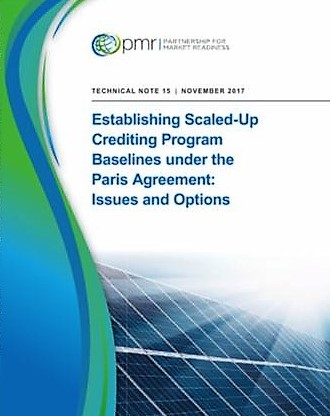 |
Establishing scaled-up crediting program baselines under the Paris Agreement: Issues and options November 2017 This technical note offers guidance and identifies options for developing baselines for scaled-up crediting programs under the Paris Agreement. Establishing baselines is partly a technical, methodological challenge, but the biggest uncertainties arise from unresolved questions regarding international rules under Article 6 of the Paris Agreement, as well as how crediting programs may interact with achievement of countries' "nationally determined contributions" (NDC). |
 |
Carbon Market Readiness Training Guide May 2017 This report includes comprehensive training material for companies on corporate preparation to carbon pricing which has been divided into 11 chapters. Each chapter was written by a representative from 10 IETA member companies with active carbon market participation. Each chapter focuses on a key aspect of preparing for compliance or involvement in a carbon market. Many of the examples are drawn from experiences with involvement in the Kyoto carbon markets (CDM, JI), the EU Emissions Trading System (ETS), and the California carbon market. . |
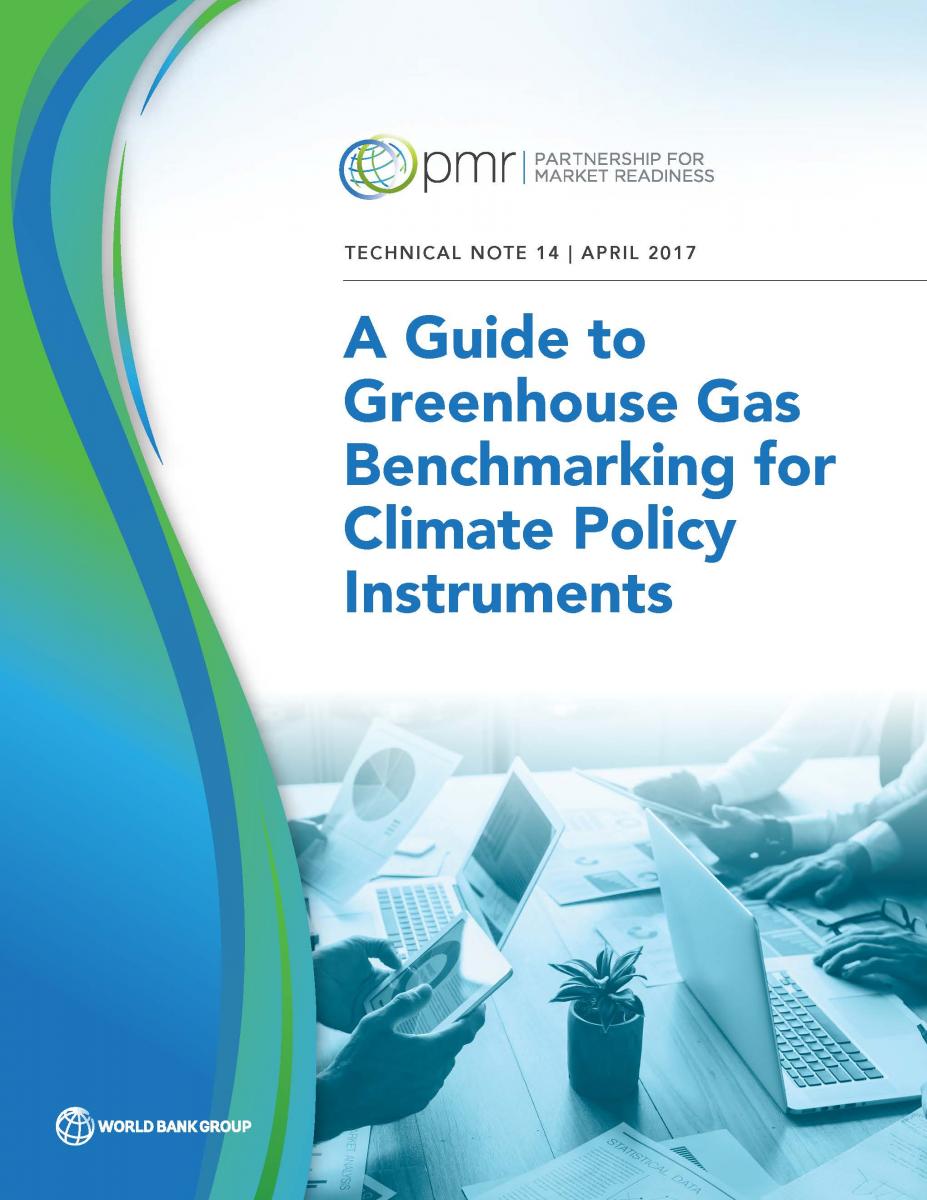 |
A Guide to Greenhouse Gas Benchmarking for Climate Policy Instruments May 2017 An increasing number of countries are considering the use of climate policy instruments to achieve mitigation commitments. Greenhouse gas benchmarks have been used in climate policy instruments to set targets and thresholds for environmental performance, and to determine the distribution of instrument benefits and obligations. This guidebook is intended to provide policymakers with structured guidance on the development of benchmarks and draws on over a decade of global experiences in benchmark development, covering practices in 16 jurisdictions that are already using, or are in the process of developing, a benchmarking approach. |
|
Carbon Tax Guide: A Handbook for Policy Makers (available in English, Spanish, and French) March 2017 Until 2008 only a handful of European countries had adopted explicit taxes on GHG emissions. By February 2017 some 24 countries and subnational jurisdictions had adopted or were scheduled to adopt a carbon tax. This guide provides an in-depth survey of the ways in which carbon taxes are being used to achieve a range of policy goals and national contexts. |
|
|
|
Emissions Trading Registires: Guidance on Regulation, Development, and AdministrationOctober 2016An emissions trading registry is an online database that issues, records, and tracks the carbon units that are exchanged within market mechanisms or financed through Results-Based Climate Finance programs. It is essential for countries that are in the process of designing market mechanisms to factor in specific regulatory, administrative, functional, and technical aspects of registry development. This report provides technical insights and guidance on how to support country-specific decision making and activities related to registry development. |
 |
December 2016 South Africa's National Climate Change Response Policy (NCCRP) sets out a number of key goals. Reaching these goals will enable South Africa to meet its commitments under the United Nations Framework Convention on Climate Change (UNFCCC). They key elements that will ensure South Africa can effectively track and steer greenhouse has (GHG) emissions and removals are the following: Establishment of a national system for GHG measurement, reporting and verification (MRV). |
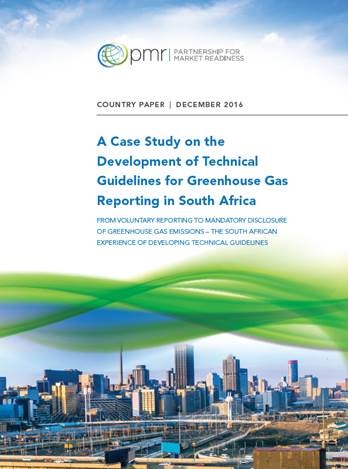 |
A Case Study on the Development of Technical Guidelines for Greenhouse Gas Reporting in South Africa December 2016 South Africa has a comprehensive climate change response strategy to support the transition to a low carbon economy and a climate-resilient society. Improving the national Greenhouse Gas (GHG) inventory and implementing a carbon tax are but two elements that form part of this transition. Developing mandatory GHG reporting regulations will support not only the National GHG Inventory but also aid policy formulation, implementation, and legislation while allowing South Africa to meet its reporting obligations under the United Nations Framework Convention on Climate Change (UNFCCC). |
|
|
Carbon Credits and Additionality : Past, Present, and FutureMay 2016This paper clarifies the concept of additionality and its significance for crediting mechanisms; describes the different approaches that have been used to demonstrate or test additionality; and explores the implications of the evolving carbon markets on the application and importance of additionality. |
 |
Greenhouse Gas Data Management: Building Systems for Corporate/ Facility-Level Reporting April 2016 This guide provides step-by-step guidance on how policymakers can design effective systems to collect facility-level GHG data. It outlines how to develop GHG data systems that support a range of policy objectives; there is no “one size fits all solution. |
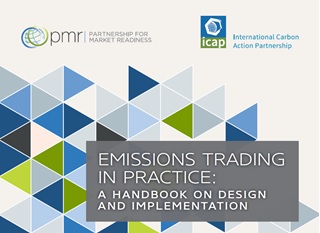 |
Emissions Trading in Practice: A Handbook on Design and Implementation (Available in Spanish, Turkish and Chinese) March 2016 The "ETS Handbook" is a go-to guide for policymakers that distills best practices and key lessons from more than a decade of practical experience with emissions trading worldwide. It was developed jointly with the International Carbon Action Partnership (ICAP). |
 |
Carbon Leakage: Theory, Evidence and Policy Design October 2015 Provides an overview of carbon leakage, presenting theory, evidence and lessons learned and provides guidance to policymakers on how to combat it. |
|
|
Crediting-Related Activities Under the PMR: Status and Support for Implementation August 2015 Reviews the crediting-related activities countries are pursuing as part of the PMR and assesses whether and how they can stimulate scaled-up mitigation; identifies opportunities for the PMR to provide further support to achieve such scale-up. |
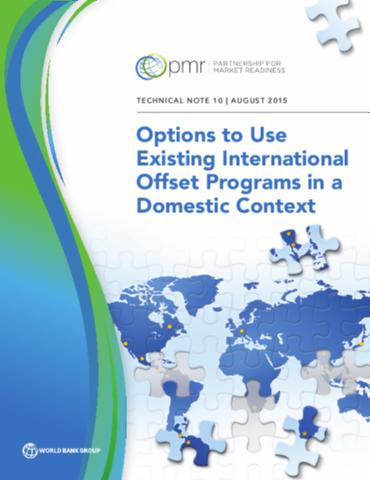 |
Options to Use Existing International Offset Programs in a Domestic Context August 2015 Explores options for drawing on existing knowledge and infrastructure to cost-effectively fast start a domestic offset mechanism. Presents a guiding framework that builds on previous research on offsets conducted by the PMR Technical Work Program. |
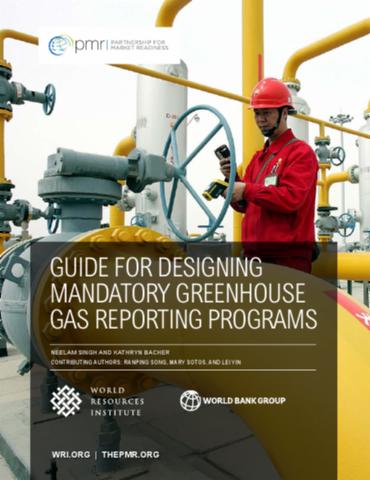 |
Guide For Designing Mandatory Greenhouse Gas Reporting Programs May 2015 This report draws on experience from 13 existing and proposed greenhouse gas reporting programs to guide policymakers and practioners in developing such programs. The guide provides step-by-step guidance on four basic design elements: determine program objectives; create an enabling environment for program design and implementation; determine program structure and requirements; and conduct program review. Business, industry associations, civil society and funding agencies may also find this guide useful in facilitating their participation in the development of a reporting program. |
 |
Preparing for Carbon Pricing: Case Studies from Company Experience January 2015 Examines the experiences of Royal Dutch Shell, Rio Tinto, and Pacific Gas and Electric as each adapted to operating within an emissions trading system. |
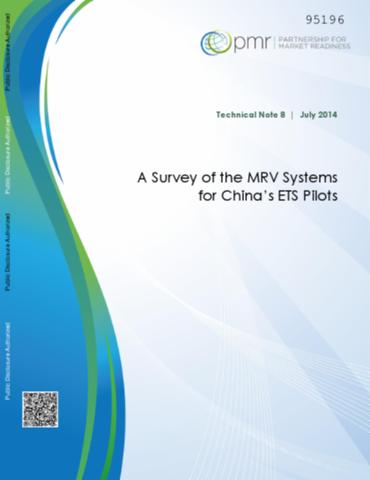 |
A Survey of MRV Systems for China's ETS Pilots July 2014 Surveys key features of GHG monitoring, reporting, and verification (MRV) systems in China’s ETS pilots. Each system reflects the characteristics of the pilots, with different approaches to coverage, reporting requirements, and data management. |
|
Lessons Learned from Linking Emissions Trading Systems: General Principles and Applications February 2014 Focuses on systems in which linked ETS systems can use a compliance instrument (allowance or credit) issued by the administrator of either system for compliance (bilateral links). Presents options for both systems to adopt common compliance instruments or retain unique instruments but honor those of the other system. |
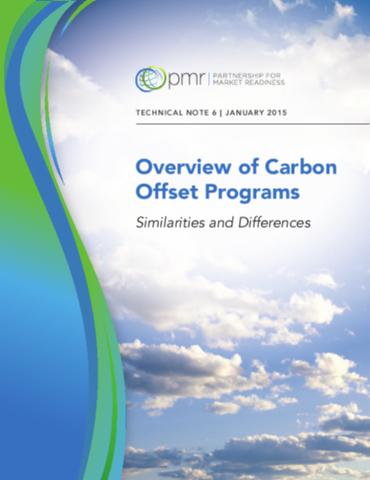 |
Overview of Carbon Offset Programs: Similarities and Differences January 2015 Maps the key elements and design features of offset programs, presenting the essential differences and similarities among existing programs. Design features of 11 programs are presented and explores how each addresses issues such as efficiency, environmental integrity, applicability, and transaction costs. |
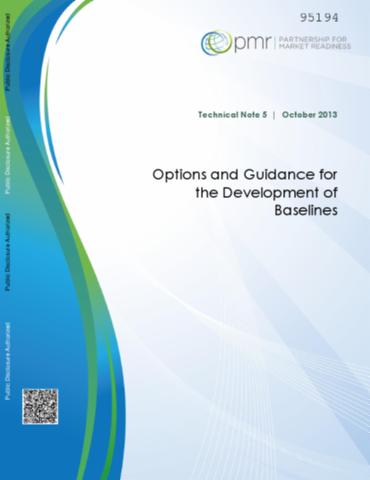 |
October 2013 Designed to support policymakers establishing new mechanisms for climate change mitigation, this note presents options and guidance for the development of GHG emissions baselines. |
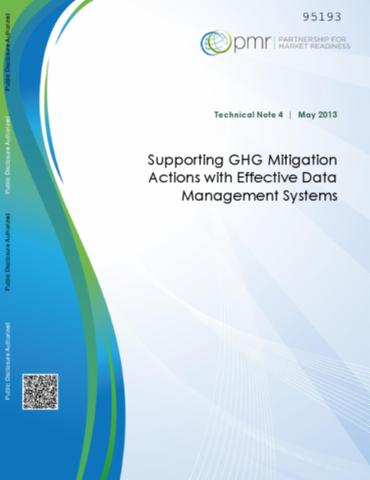 |
May 2013 Presents GHG data management systems (technologies and processes that facilitate data collection and organization) used to meet climate change-related policy objectives through the lens of four cases studies. |
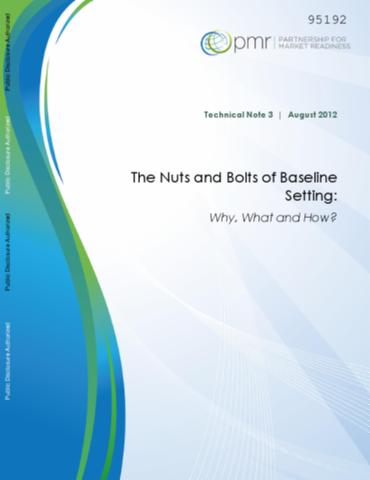 |
August 2012 This document provides an overview of baseline setting for greenhouse gas (GHG) crediting mechanisms. The main purpose of this note is to examine key issues for baseline setting in the context of scaled-up crediting mechanisms, and the discussion takes into account concepts developed and experience gained under these mechanisms. In addition, most of the concepts and examples presented here are relevant to setting baselines in the energy and industry sectors. |
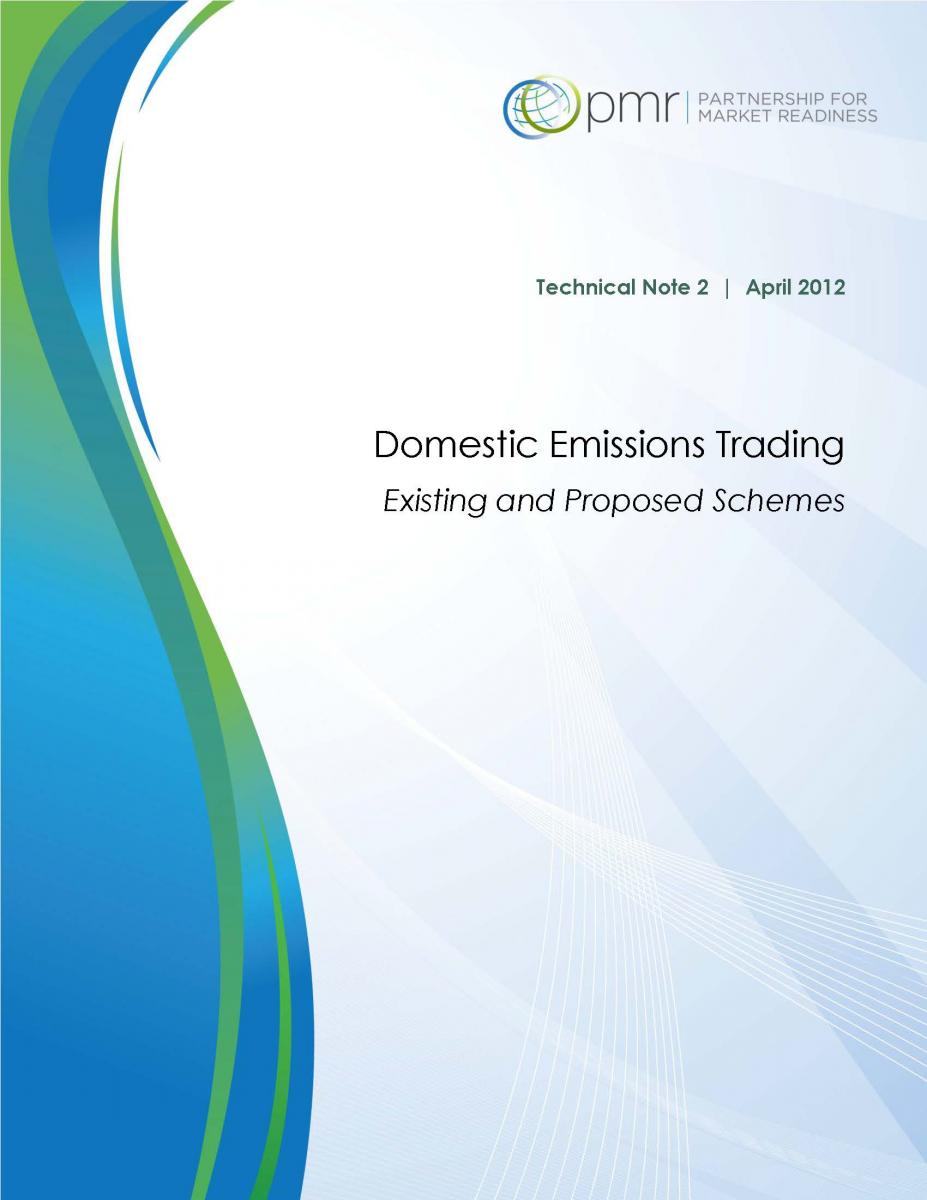 |
April 2012 Provides an overview and assessment of lessons and insights from existing and proposed domestic emissions trading schemes, including in the EU, New Zealand, Australia, Tokyo and California. For each scheme, a set of general characteristics—such as coverage and scope, setting a cap, allocation of allowances—is considered. |
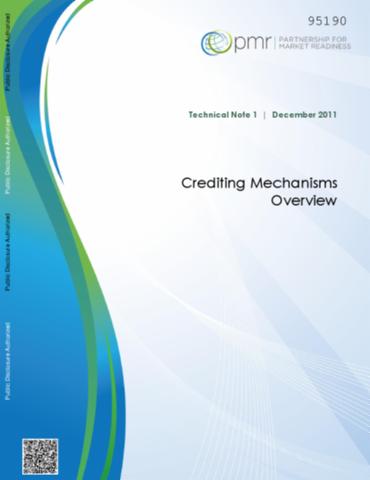 |
December 2011 Summarizes (proposed) scaled-up crediting instruments as well as existing project-based crediting schemes and highlights important characteristics across them. This note provide insights that may inform the design and use of possible “scaled-up crediting instruments”. |

